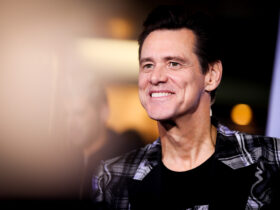Bridging Two Worlds
For centuries, the interplay between science and philosophy has shaped our understanding of the world. From the atomic models of Democritus to Einstein’s theory of relativity, scientific discoveries have often clashed and then later melded with philosophical principles. In recent decades, a theory known as “biocentrism” has gained popularity, proposing a perspective where life and biology are central to reality, and the universe is a product of consciousness. However, as we delve deeper into its propositions, critical analyses and scientific evidence have increasingly pointed towards an essential recalibration, if not a comprehensive debunking, of biocentrism.
Understanding Biocentrism: The Universe in Our Minds
Biocentrism is a theory proposed by Robert Lanza, a renowned scientist in regenerative medicine, and Bob Berman, a noted astronomer. The theory posits that life and consciousness are fundamental to the fabric of the universe. It suggests that reality does not exist independently of life or consciousness – rather, everything we experience is a construct of our perception.
Lanza argues that biology and the presence of life create the reality that we know, flipping the script on the traditional science-based view that life is a mere byproduct of the universe’s physical laws. This idea aligns with the observer effect in quantum mechanics, where an observer’s consciousness determines certain properties of subatomic particles.
However, while biocentrism is fascinating and echoes many ancient philosophical ideas, several of its core concepts don’t hold up under scrutiny, leading to its critique and debunking in the scientific community.
Scientific Foundations: Where Biocentrism Falls Short
A significant reason biocentrism is debunked by many in the scientific community is its heavy reliance on misinterpreting scientific theories. One such theory is quantum mechanics, particularly the observer effect and the double-slit experiment, which Lanza uses to argue that conscious observation affects reality at a fundamental level.
The double-slit experiment demonstrates that particles can display characteristics of both waves and particles, a phenomenon known as wave-particle duality. The outcome changes, intriguingly, when observed – a particle will act as a particle or a wave depending on whether there is an observation. Lanza suggests this as evidence that the universe is subject to the mind’s workings.
However, this is a misinterpretation. The “observer” in quantum mechanics doesn’t necessarily need to be a conscious entity but merely an apparatus or method by which a system becomes entangled with another. The change in behavior doesn’t happen because a conscious mind wills it, but because the act of measurement disturbs the system. Therefore, invoking quantum mechanics as evidence for biocentrism stretches scientific theory beyond its intended application, leading to its debunking in this context.
The Problem of Consciousness: Defining Reality
Biocentrism posits that the universe doesn’t exist without a conscious observer, asserting a deeply interdependent relationship between consciousness and reality. However, this standpoint raises significant issues, the most prevalent being the definition and nature of consciousness itself.
Consciousness, despite decades of cognitive study, remains a largely elusive concept. There’s no consensus on what consciousness entirely entails, and it’s considered one of the hard problems of science because it’s subjective and doesn’t lend itself to traditional methods of scientific inquiry.
Moreover, if consciousness creates reality, how do we explain the reality experienced by different consciousnesses, or the objective consistency of physical laws? If a tree falls in the forest with no one around to hear it, biocentrism suggests it may not make a sound — or even fall at all. But this philosophical puzzle stands in stark contrast to the empirical evidence supporting the consistent behavior of physical phenomena, irrespective of a conscious observer.
Additionally, if we were to follow the thread of biocentrism to its logical conclusion, it would imply that before life evolved in the universe, there was no universe to speak of. This notion contradicts much of what we know about the Big Bang, cosmic evolution, and the formation of stars and galaxies long before life emerged.
Philosophical Contentions: Old Wine in a New Bottle?
Philosophically, biocentrism echoes the principles of idealism and solipsism. Idealism posits that reality is mentally constructed or immaterial, while solipsism takes it a step further to argue that only one’s mind is sure to exist. However, these philosophical stances have been extensively debated and critiqued.
One primary criticism is the problem of solipsism, which leads to the “egocentric predicament.” If everything, including other minds, is a creation of our consciousness, as biocentrism might suggest, it leaves us unable to prove the existence of anything beyond our minds. This viewpoint is radically skeptical and disengages with the intersubjective experiences that form human life’s foundation, experiences that are better explained by a shared, objective reality.
A Universe Independent of Perception: The Empirical View
A fundamental reason biocentrism is debunked is the robust, empirical evidence supporting a universe independent of human perception. Astrophysical observations show that the universe is approximately 13.8 billion years old, having originated from the Big Bang, and has been expanding and evolving since. This understanding is based on the cosmic microwave background radiation, the abundance of light elements, and the redshift of distant galaxies, among other observations.
Furthermore, the laws of physics, which have been consistently validated through experiments, suggest a universe that functions based on set principles, not subjective consciousness. For instance, the principles of thermodynamics, the conservation of energy, and the theory of general relativity have been verified across various contexts and scales, indicating a universe that operates independently of human, biological, or any form of conscious presence.
The Dilemma of Subjectivity: Questioning Reality
Biocentrism leans heavily on the idea that all reality is subjective, tailored to individual consciousness. This stance, however, raises contentious debates around the objectivity of the world. If everything we perceive is solely through our filters, the shared consistency of physical laws and natural phenomena — evident in replicable scientific experiments — becomes an inexplicable anomaly, challenging the very core of biocentric philosophy.
Misuse of Quantum Theory: Science or Pseudoscience?
Central to biocentrism is the application of quantum theory, suggesting consciousness influences particle behavior. However, experts argue that this is a gross misinterpretation. Quantum mechanics, while acknowledging the role of an observer, doesn’t necessitate a conscious one. Particles behave independently of human thought, adhering instead to probabilistic natural laws, rendering the biocentric view more pseudoscience than grounded theory.
Anthropic Principle: Balancing Perspectives
The Anthropic Principle, in contrast to biocentrism, proposes that observations of the universe are limited by the observer’s existence. This doesn’t mean the universe ceases to exist without consciousness, but rather that our ability to comprehend is bounded by our human limitations. This principle supports a universe independent of human observation, existing and functioning based on foundational physical laws.
Consistency of Natural Laws: The Objective Framework
The universe operates on consistent laws, evidenced by phenomena like gravity, electromagnetism, and nuclear forces. These forces’ predictability and uniform application, observable in natural events and scientific experiments, underscore a reality independent of human consciousness. Such objectivity, consistent across various observations, starkly contradicts biocentrism’s premise of a consciousness-centric universe.
Existential Reflections: Beyond Human-centric Views
While biocentrism places humanity at the universe’s center, cosmological evidence suggests a reality far grander than human existence. The vastness of the cosmos, filled with galaxies, stars, and planets, points to a universe not contingent on human experience. Recognizing our minuscule place in the cosmic expanse can be humbling and spiritually enriching, redefining our search for existential meaning.
Concluding Thoughts: Embracing Cosmic Humility
Debunking biocentrism doesn’t diminish our quest for understanding; it grounds us in cosmic humility. Acknowledging the universe’s immensity and the steadfastness of its laws inspires awe and reverence. Our existence is a serendipitous marvel, but not the axis on which the cosmos rotates. Embracing this perspective can foster a profound sense of connection with the vast, wondrous universe we continue to explore.
Conclusion: Science in Reflection
The allure of biocentrism lies in its fusion of science with existential meaning, offering an intoxicating narrative where humanity is intimately tied to the cosmos’s very fabric. However, upon close examination, biocentrism appears to be a repackaged form of ancient philosophical ideals, stretched in an attempt to commingle with established scientific doctrines.
The debunking of biocentrism doesn’t necessarily strip life of significance within the cosmos. Instead, it reaffirms a universe majestic in its laws and phenomena, a place where life — through a fascinating confluence of circumstances — has the unique privilege of observing, studying, and experiencing. In debunking biocentrism, we do not close the door on wonder or existential meaning. Instead, we highlight the remarkable human endeavor to objectively understand the cosmos and our extraordinary place within it.

































